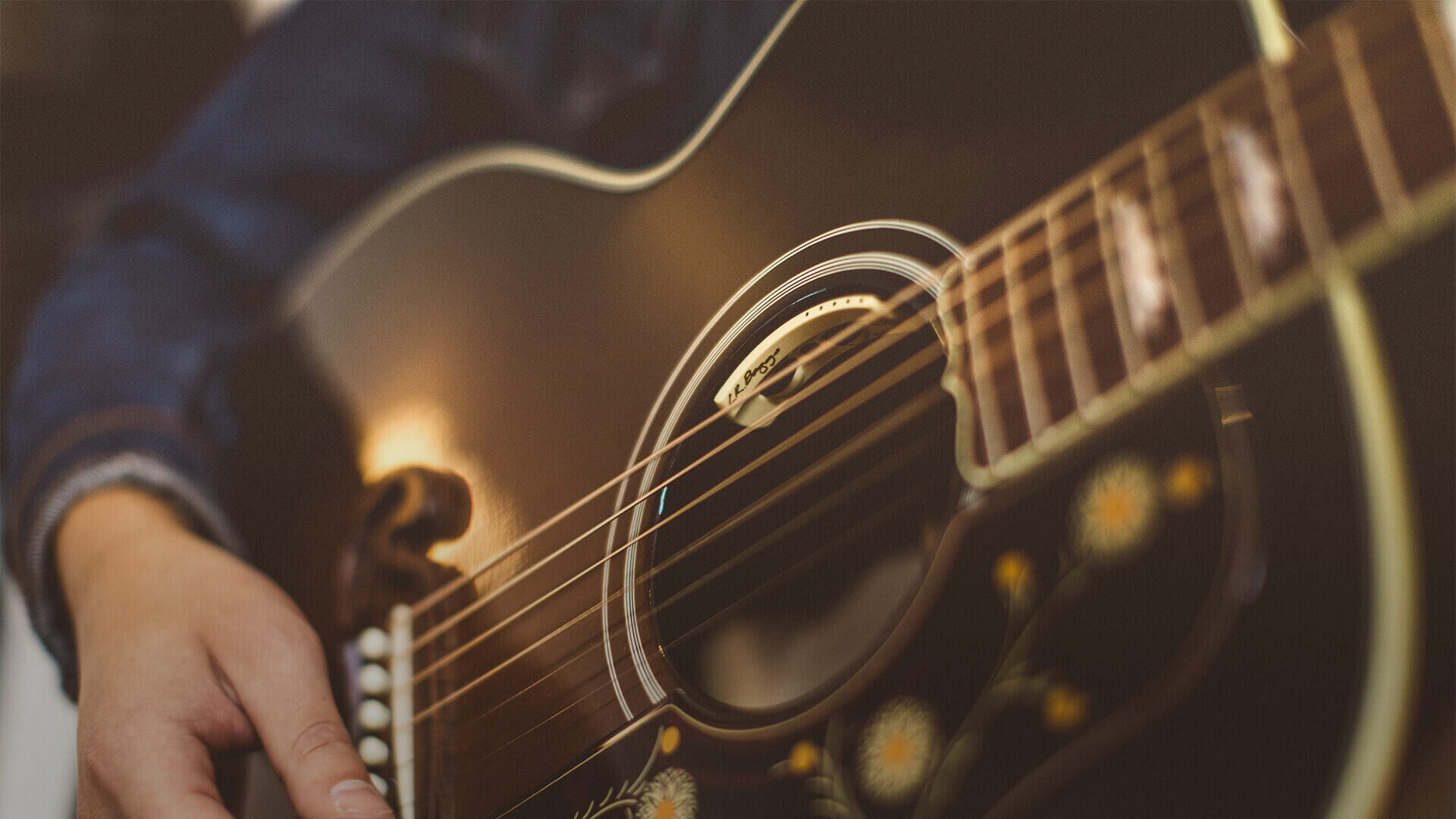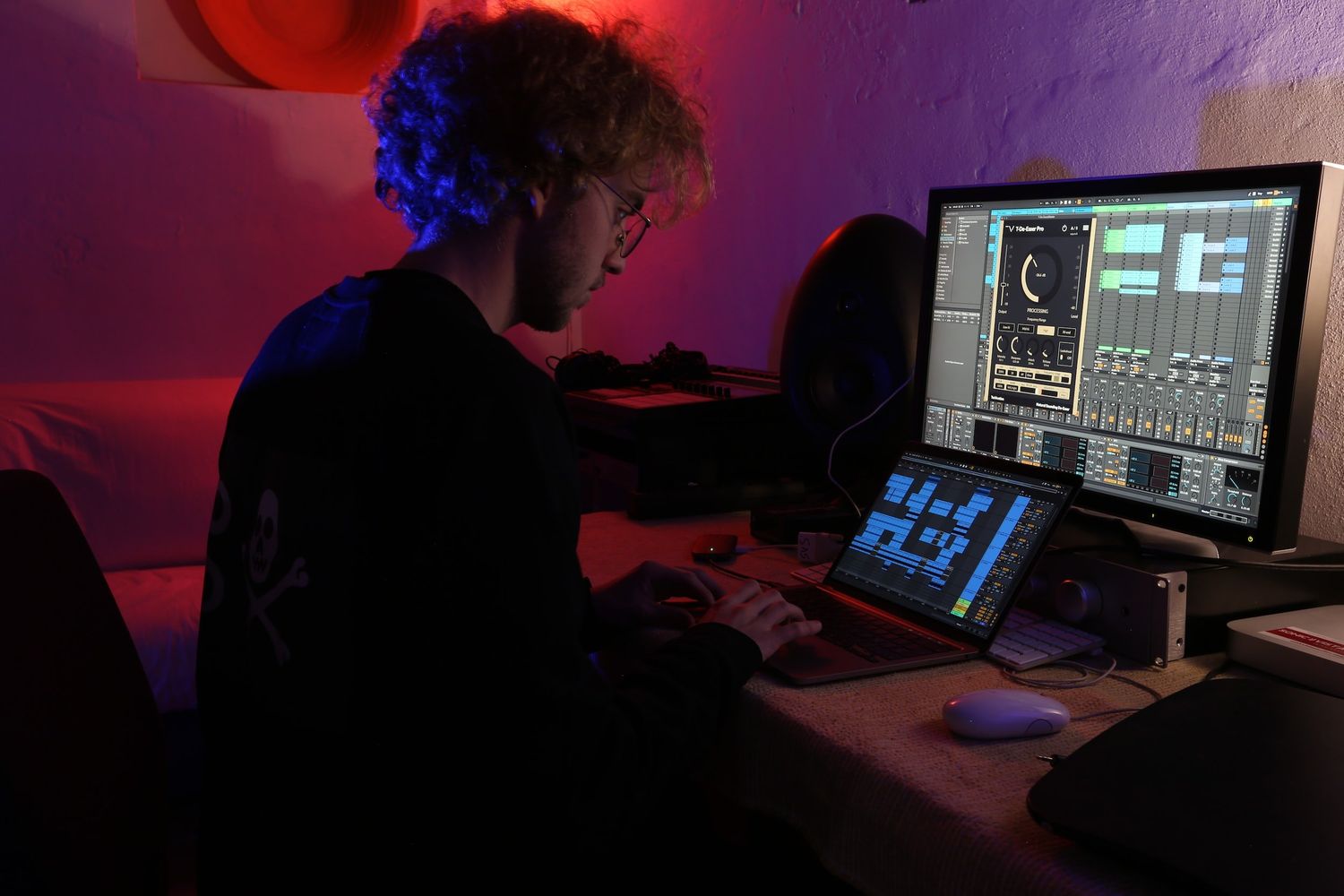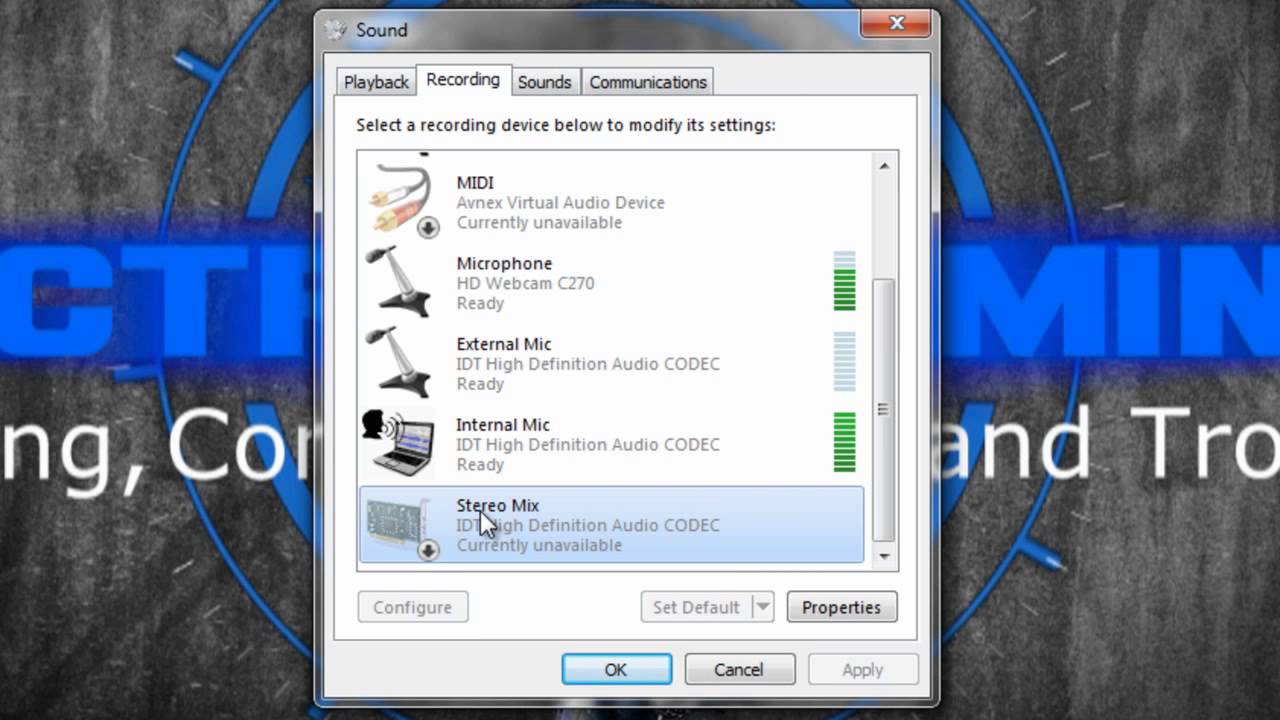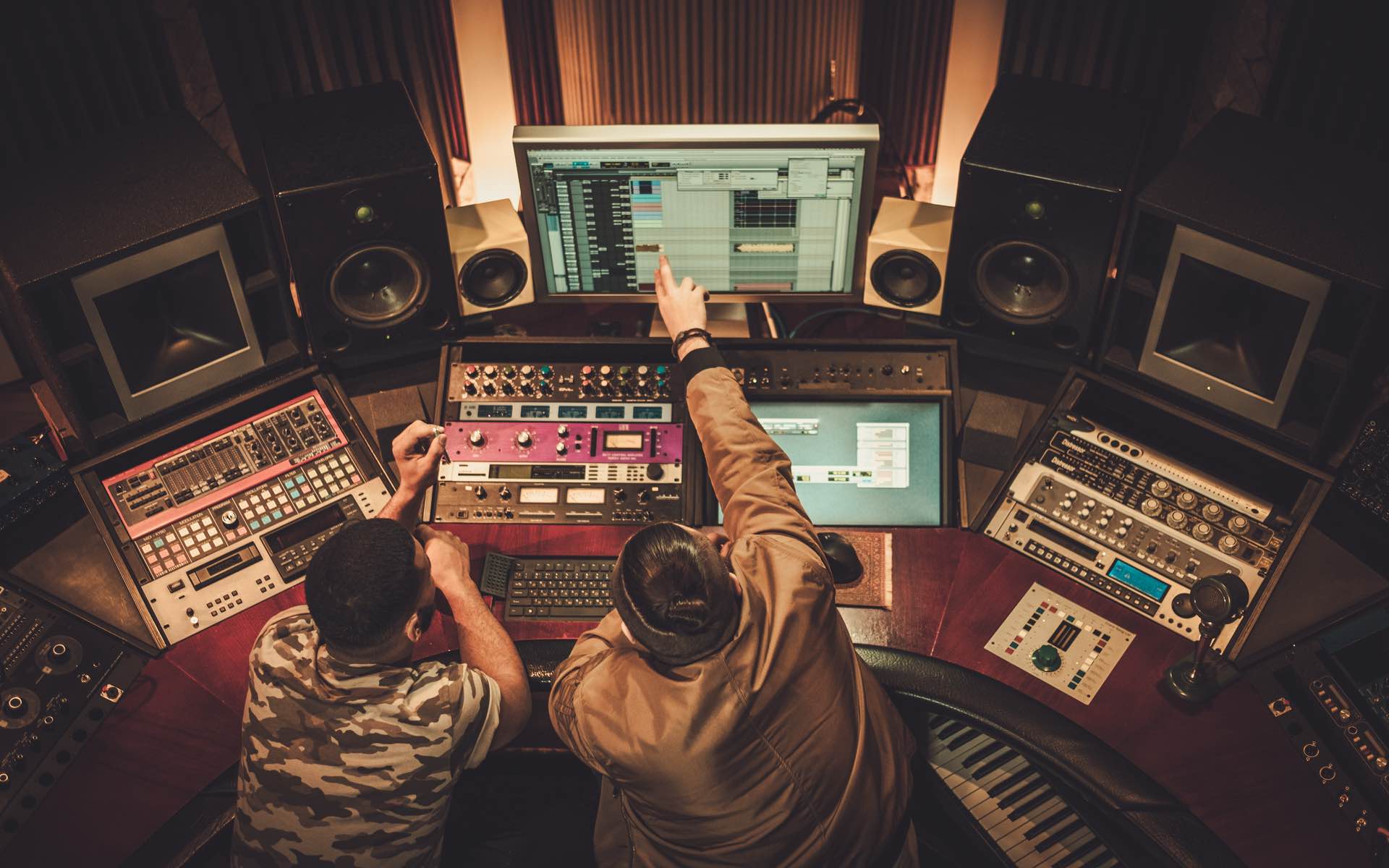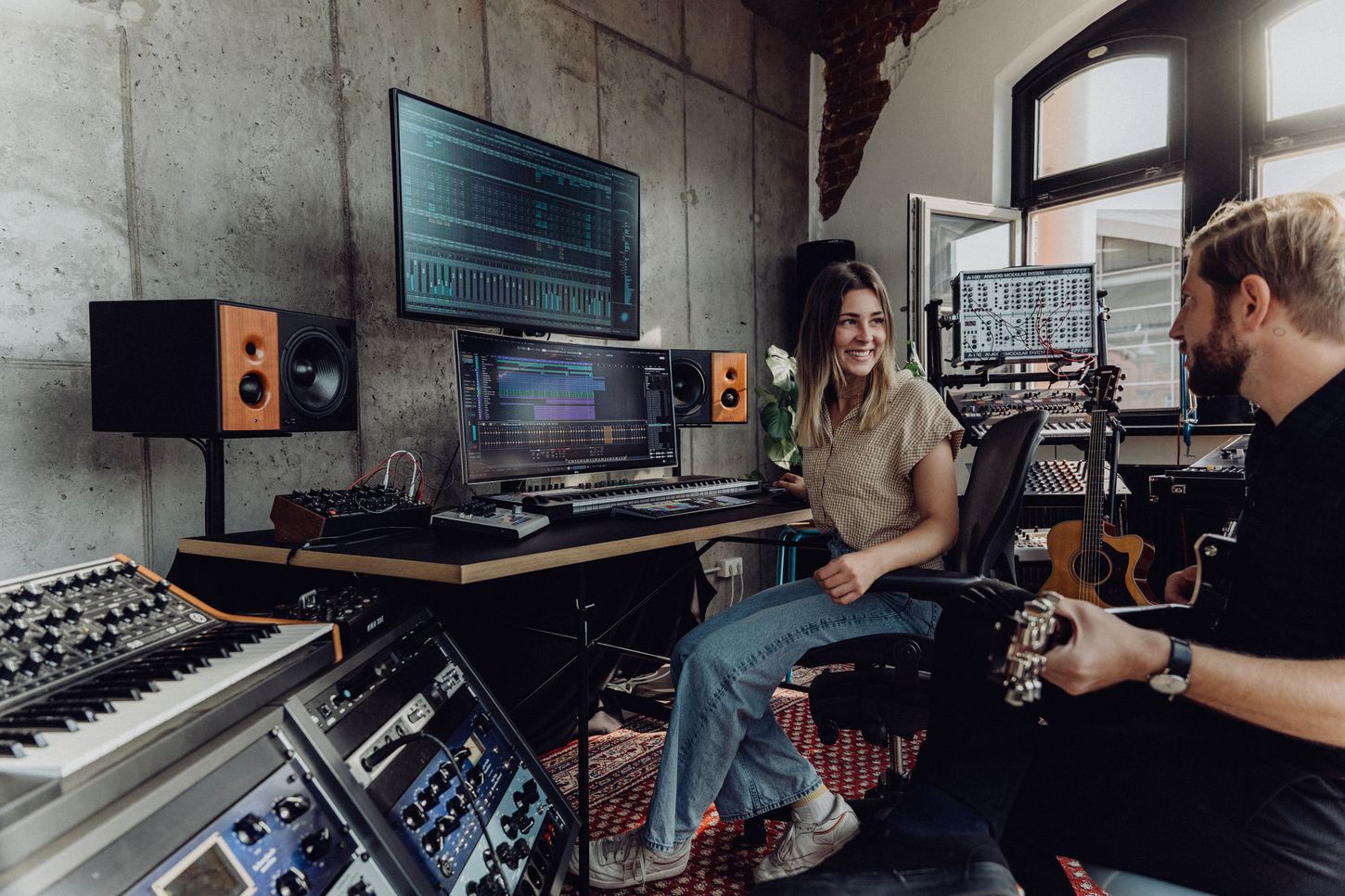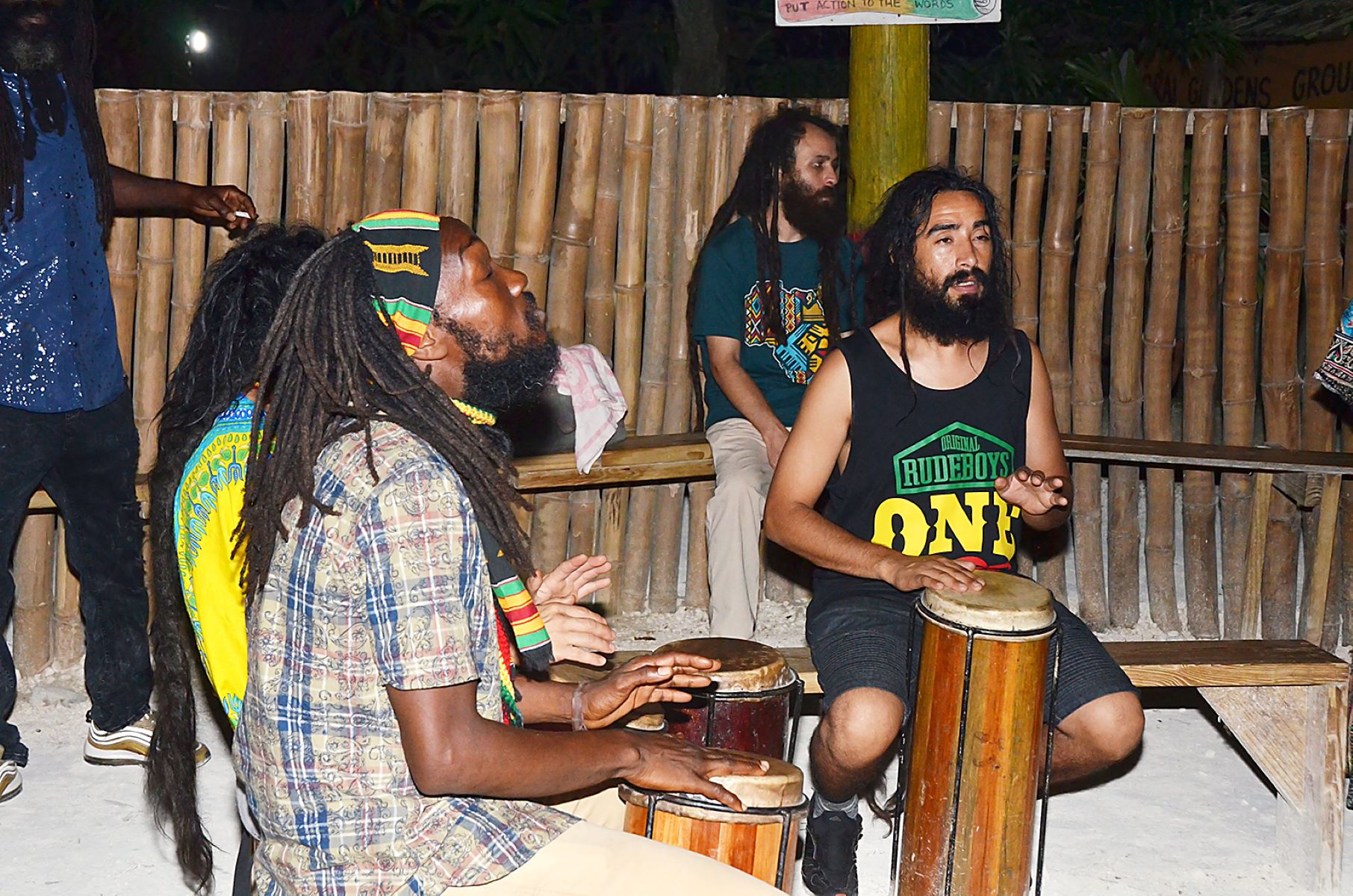

Reggae
How To Mix Reggae Drums
Modified: February 16, 2024
Learn the art of mixing reggae drums with our step-by-step guide. Enhance the rhythm and groove of your reggae tracks with expert tips and techniques.
(Many of the links in this article redirect to a specific reviewed product. Your purchase of these products through affiliate links helps to generate commission for AudioLover.com, at no extra cost. Learn more)
Table of Contents
- Introduction
- Understanding the Basics of Reggae Drumming
- Choosing the Right Drum Kit and Equipment
- Tuning Your Drums for Reggae
- Essential Reggae Drumming Techniques
- Playing the One Drop Reggae Rhythm
- Adding Fills and Breaks to Reggae Drumming
- Incorporating Skank Patterns into your Playing
- Applying Dub Style to Reggae Drumming
- Tips for Recording Reggae Drums
- Conclusion
Introduction
Reggae music is a genre that originated in Jamaica in the late 1960s. Known for its laid-back and infectious rhythms, reggae has captured the hearts of music enthusiasts worldwide. At the heart of this characteristic sound lies the reggae drumming style. The grooves and beats created by reggae drummers provide the foundation for the entire genre.
In this article, we will delve into the world of reggae drumming and explore the techniques, equipment, and tips that can help you master this unique style. Whether you are a seasoned drummer looking to expand your musical repertoire or a beginner eager to explore the rhythms of reggae, this article will serve as a comprehensive guide.
We will start by understanding the basics of reggae drumming, including the key elements that define this style. From there, we will delve into choosing the right drum kit and equipment specifically tailored for reggae. Tuning your drums for that authentic reggae sound will also be covered, ensuring you achieve the perfect tone.
Next, we will explore essential reggae drumming techniques that can add depth and flavor to your playing. The one drop reggae rhythm, often considered the hallmark of the genre, will be explained in detail along with tips on how to nail it. We will also discuss adding fills and breaks to your reggae drumming, as well as incorporating skank patterns that bring that unmistakable reggae feel.
To take your reggae drumming to the next level, we will delve into the world of dub style drumming. Dub, a subgenre of reggae, revolutionized the use of effects and studio techniques, and we will explore how you can apply these techniques to enhance your reggae drumming.
For those interested in recording reggae drums, we will provide valuable tips on how to capture the essence of reggae in the studio. Whether you are recording in a professional studio or a home setup, these tips will help you achieve a professional and authentic sound.
By the end of this article, you will have a solid foundation in reggae drumming and be equipped with the knowledge to start grooving to reggae rhythms with confidence. So, grab your drumsticks and let’s dive into the world of reggae drumming!
Understanding the Basics of Reggae Drumming
Reggae drumming is characterized by its unique rhythmic patterns and syncopated beats. To fully grasp the essence of reggae drumming, it’s crucial to understand its basic elements.
One of the fundamental elements of reggae drumming is the emphasis on the offbeat. Unlike many other genres where the emphasis is on the downbeat (beat one of each measure), reggae drumming places emphasis on beats two and four. This creates a distinct feel and groove that is instantly recognizable.
Another important aspect of reggae drumming is the use of the hi-hat and the snare drum to create the characteristic “push-pull” effect. The hi-hat plays a continuous eighth-note pattern, while the snare drum emphasizes the offbeats. This combination adds a sense of swing and syncopation to the rhythm, giving reggae its infectious groove.
Additionally, reggae drummers often employ a technique called “skanking” on the hi-hat or ride cymbal. Skanking involves playing short, staccato notes on the offbeats, further accentuating the syncopated feel of the rhythm. This technique adds an element of bounce and energy to the reggae groove.
Moreover, reggae drumming incorporates elements from African and Caribbean rhythms. Influences from mento, ska, and rocksteady music can be heard in the drumming patterns, creating a fusion of styles that give reggae its unique flavor.
Lastly, reggae drummers make use of fills and breaks to add variation and dynamics to their playing. Fills are short drumming phrases played between sections of a song, while breaks are moments where the drums take the spotlight with a short, improvised solo-like passage. Both fills and breaks are opportunities for the drummer to showcase their creativity and add excitement to the music.
Understanding these basic elements is essential for any aspiring reggae drummer. By grasping the offbeat emphasis, the push-pull effect, skanking, and incorporating elements from African and Caribbean rhythms, you will be on your way to capturing the essence of reggae drumming.
In the next section, we will explore the equipment required to achieve the authentic reggae drumming sound. From drum kits to cymbals and percussion instruments, we will guide you in choosing the right gear for your reggae adventures.
Choosing the Right Drum Kit and Equipment
When it comes to playing reggae drums, having the right equipment is crucial in achieving the desired sound. Here are some considerations when selecting a drum kit and other necessary equipment for reggae drumming.
Drum Kit: The drum kit serves as the foundation of your reggae drumming setup. Opt for a kit that provides a deep and warm tone. Maple or mahogany shells are excellent choices as they produce the rich and full-bodied sound associated with reggae. Consider a larger sized bass drum (22 inches or more) to enhance low-end frequencies.
Snare Drum: Look for a snare drum with a crisp and bright sound. A medium to shallow depth (around 5-6 inches) and a wooden shell (such as maple or birch) can provide the desired sharpness and projection needed in reggae drumming.
Cymbals: Choose cymbals that offer clear and defined tones with a quick decay. Ride cymbals with a controlled sustain and a bright, cutting sound are preferred. Look for hi-hat cymbals that deliver clean and crisp “chick” sounds when closed, as well as a bright and articulate tone when played open.
Percussion Instruments: Adding percussion instruments to your setup can enhance the reggae feel. Consider including a tambourine, shaker, or cowbell to add rhythmic accents and textures. These instruments can contribute to the lively and infectious grooves that define reggae music.
Hardware and Accessories: Ensure that your hardware is sturdy and reliable, as reggae drumming often involves energetic playing. Double-braced stands and heavy-duty pedals are recommended to withstand the power and energy exerted during reggae performances. Additionally, invest in quality drumheads, as they significantly impact the sound of your drums. Coated heads offer a warmer and focused tone, while clear heads provide brighter and more resonant sounds.
Remember, the goal is to achieve a balanced and cohesive sound with your drum kit and equipment. Experiment with different combinations and brands, but always prioritize the quality and suitability of the gear for reggae drumming.
In the next section, we will delve into the importance of tuning your drums specifically for reggae and how it can further enhance your reggae drumming experience.
Tuning Your Drums for Reggae
Tuning your drums properly is essential in achieving the authentic reggae sound. It can make a significant difference in the overall tone and resonance of your drum kit. Here are some tips to help you tune your drums for reggae drumming.
Bass Drum: Start by detuning the resonant head slightly to achieve a deeper and more resonant sound. This will provide a solid foundation for the rhythm. Experiment with different tensions on the batter head until you find a balance between a punchy attack and a deep low-end sustain.
Snare Drum: Tune the snare drum to produce a crisp and bright sound. Tighten the snare wires evenly to ensure a consistent and responsive snare response. Adjust the tension of the batter head to achieve the desired amount of snare sensitivity and snappiness.
Toms: Tune the tom drums to different pitches to create a melodic and dynamic sound. The higher-pitched toms can provide the necessary clarity and cut through the mix. Experiment with different tensions on the batter and resonant heads to find the sweet spot for each tom drum.
Resonance and Overtone Control: Aim for a balanced and controlled sound by using techniques such as dampening and tuning intervals. Utilize drum dampening products like gels or moon gels to control excessive resonance and unwanted overtones. Experiment with tuning intervals between the batter and resonant heads to achieve a desirable pitch relationship that complements the reggae groove.
Consistency: Ensure that all drums in your kit are consistently tuned. This will contribute to a cohesive sound and facilitate easier transitions between different drum patterns and fills. Take the time to tune and adjust each drum individually, making adjustments as necessary.
Remember, tuning is a personal preference, and what works for one drummer may not work for another. Listen carefully to the sound you are producing and make adjustments accordingly. Don’t be afraid to experiment and find the tuning that best suits your style and the reggae sound you want to achieve.
With your drums properly tuned, you are now ready to explore the essential reggae drumming techniques. In the next section, we will dive into the rhythmic patterns and playing styles that define reggae drumming.
Essential Reggae Drumming Techniques
Reggae drumming is characterized by its unique rhythmic patterns and techniques. Mastering these techniques is essential in capturing the essence of the genre. Here are some essential reggae drumming techniques to incorporate into your playing:
One Drop Rhythm: The one drop rhythm is the foundation of reggae drumming. It involves accentuating beats two and four while omitting the kick drum on the one. The snare drum is played on beat three with a cross stick or rimshot, creating a distinctive syncopated feel. Practice maintaining a steady rhythm and emphasizing the offbeats to master this fundamental reggae drumming technique.
Skanking: Skanking is the technique of playing short, staccato notes on the hi-hat or ride cymbal on the offbeats. This technique adds a bouncy and rhythmic feel to the groove. Experiment with skanking on different parts of the drum kit to create variations in the rhythm and add creativity to your playing.
Ghost Notes: Ghost notes are soft, muted drumming notes that are played in between the main accents. They add depth and texture to the rhythm, creating a sense of groove and dynamics. Incorporate ghost notes on the snare drum and other drums to enhance the overall feel of your reggae drumming.
Fills and Breaks: Fills and breaks provide opportunities to add excitement and variation to your reggae drumming. Start with simple fills and progress to more intricate patterns, using tom-toms, snare rolls, and cymbal crashes to create dynamic transitions between song sections. Remember to maintain the groove and fit the fill or break seamlessly into the rhythm.
Hi-Hat Chicks: Explore different patterns with the hi-hat pedal to create rhythmic accents. Open the hi-hat on specific beats or use quick “chicks” to add flavor to your playing. Experiment with alternating between closed and open hi-hat sounds to create a dynamic and expressive reggae drumming style.
Synchronization with Bass Guitar: The interaction between the drums and the bass guitar is a crucial aspect of reggae music. Focus on playing in sync with the bass guitarist, locking in with their groove and creating a tight rhythm section. Listen carefully to the bass lines and find the right balance between complementing their patterns and adding your own rhythmic creativity.
Remember to practice these techniques slowly and with precision. Start with simple patterns and gradually build up speed and complexity. Pay attention to your timing and feel, as reggae drumming relies heavily on steady and consistent rhythms.
With these essential reggae drumming techniques in your repertoire, you are ready to explore the intricacies of the one drop rhythm. In the next section, we will dive deeper into playing the one drop rhythm and how to master its nuances.
Playing the One Drop Reggae Rhythm
The one drop rhythm is the quintessential groove that defines reggae drumming. It is characterized by its syncopated feel and emphasis on beats two and four, creating a laid-back and infectious groove. Here’s a breakdown of how to play the one drop reggae rhythm:
Step 1: Establish the Basic Pulse
Begin by establishing a steady pulse on the hi-hat or ride cymbal. Play eighth notes with a relaxed and consistent motion, keeping a steady tempo. This continuous pulse will anchor the rhythm throughout the song.
Step 2: Accentuate Beats Two and Four
While maintaining the pulse, accentuate beats two and four by playing the snare drum. Use a cross stick technique, where you strike the rim of the drum with the butt end of the drumstick. This produces a distinctive and crisp snare sound.
Step 3: Omit the Kick Drum on the One
In reggae drumming, it’s common to omit the kick drum on beat one. This creates space and allows the bass guitar to drive the rhythm. Focus on playing a ghost note or a soft stroke on the snare drum on beat one to maintain the groove without overpowering the bassline.
Step 4: Utilize Skank Patterns
Enhance the pulse and rhythmic texture by incorporating skank patterns on the hi-hat or ride cymbal. Use short, staccato strokes on the offbeats (the ‘and’ of each beat) to create a bouncy and lively feel. The skank patterns add a distinct reggae flavor to the groove.
Step 5: Listen, Feel, and Lock In
Listening and feeling the rhythm is crucial in playing the one drop reggae rhythm effectively. Pay close attention to the bass guitar and establish a strong connection with the bassist. Lock in with their groove, ensuring that your drumming complements and supports their playing. Maintain a tight rhythm section by playing in sync and maintaining a steady pulse.
Remember to start slowly and gradually build up speed and complexity. Focus on playing with precision and accuracy, paying attention to the dynamics of the rhythm. Strive for a relaxed and laid-back feel, with a consistent and solid groove.
Once you have mastered the one drop reggae rhythm, you can experiment with variations and embellishments, such as adding fills, breaks, and additional accents. Feel free to incorporate your own style and creativity while maintaining the essence and integrity of the reggae groove.
In the next section, we will explore how to add fills and breaks to your reggae drumming, enhancing the dynamics and excitement of your playing.
Adding Fills and Breaks to Reggae Drumming
Fills and breaks are essential elements of reggae drumming that add excitement, variation, and dynamics to your playing. They provide opportunities for creative expression and can elevate the overall musical experience. Here are some tips on incorporating fills and breaks into your reggae drumming:
Start with Simple Fills: Begin by incorporating simple fills between phrases or sections of a song. These could be short drumming patterns that add a rhythmic and melodic element to the music. Experiment with different drum combinations, such as snare rolls, tom fills, or cymbal crashes, while maintaining the groove and feel of the rhythm.
Emphasize Breaks: Breaks are moments where the drums take the spotlight, creating a brief solo-like passage. These breaks can be used to build anticipation or add a dramatic pause in the music. Experiment with various rhythmic patterns, dynamics, and drumming techniques to create captivating and memorable breaks.
Listen to the Music: Pay close attention to the song structure and dynamics when deciding where to place fills and breaks. Listen to the other instruments in the band, particularly the bass guitar, and find appropriate moments to enhance the music. It’s important to maintain a cohesive and supportive role in the rhythm section while adding your own creative touches.
Maintain the Groove: While fills and breaks can be exciting, it’s crucial to maintain the groove and not disrupt the overall rhythm of the music. The one drop reggae rhythm should still be felt even when incorporating fills and breaks. Practice transitioning smoothly from the groove into the fill or break and seamlessly returning to the rhythm.
Practice and Experiment: Take the time to practice different fills and breaks, starting with simpler patterns and gradually building up complexity. Experiment with different rhythms, accents, and drumming techniques to find your unique style. Use recordings of reggae songs as a reference and try to emulate the fills and breaks played by professional reggae drummers.
Interact with the Band: Communication and interaction with other musicians in the band are essential when playing fills and breaks. Coordinate with the bassist and other instrumentalists to ensure a cohesive musical experience. Pay attention to cues given by other musicians and work together to create seamless transitions between sections.
Remember, the aim is to enhance the music and add excitement without overshadowing the overall groove and feel of the reggae rhythm. Develop your own style and repertoire of fills and breaks, and have fun exploring different possibilities within the reggae genre.
In the next section, we will discuss incorporating skank patterns into your reggae drumming, adding further depth and rhythmic texture.
Incorporating Skank Patterns into your Playing
Skank patterns are a fundamental aspect of reggae drumming that contribute to the distinctive rhythmic texture and energy of the genre. Skanking involves playing short, staccato notes on the offbeats, creating a bouncy and lively feel. Here are some tips on how to incorporate skank patterns into your reggae drumming:
Use the Hi-Hat or Ride Cymbal: Skank patterns are typically played on the hi-hat or ride cymbal to add rhythmic accents to the groove. Use short, staccato strokes with either the tip or shoulder of the drumstick on the offbeats (the “ands” of each beat). Experiment with different patterns and placements to find the right feel.
Alternate with the Snare Drum: Add variation to your skank patterns by alternating between the hi-hat/ride cymbal and the snare drum. For example, you can play a skank pattern on the hi-hat for one measure and then switch to the snare drum for the next measure. This adds rhythmic interest and keeps the groove fresh.
Syncopate with Ghost Notes: Incorporate ghost notes, which are soft, muted drumming notes, into your skank patterns. Play these ghost notes on the snare drum or toms to add depth and complexity to the rhythm. Experiment with different combinations of skank patterns and ghost notes to find unique and interesting rhythmic variations.
Explore Different Skank Patterns: Reggae music offers a wide range of skank patterns to choose from. Some common skank patterns include the “bubble,” “chop,” and “double skank.” Each pattern has its own distinct feel and can be used to create different moods within a song. Practice these patterns and experiment with variations to add character to your playing.
Sync with the Band: Skank patterns should complement and interact with other instruments in the band, particularly the guitar and keyboards. Listen closely to the rhythmical patterns of these instruments and find ways to sync your skank patterns with them. This coordination will contribute to a tight and cohesive sound.
Create Dynamic Patterns: Vary the intensity and dynamics of your skank patterns to add further dimension to your playing. Incorporate accents or play certain beats with more emphasis to create dynamic contrasts. This will help build tension and release within the music.
By incorporating skank patterns into your reggae drumming, you will infuse the groove with energy and rhythmic interest. Practice different patterns, experiment with variations, and listen to recordings of reggae songs to develop your own unique style. Remember to keep the one drop reggae rhythm as the foundation and use skank patterns to enhance the overall feel of your playing.
In the next section, we will explore applying dub style to reggae drumming, adding further creativity to your reggae drumming repertoire.
Applying Dub Style to Reggae Drumming
Dub is a subgenre of reggae that emerged in the 1960s, characterized by its heavy use of effects and studio techniques. Dub style drumming is known for its experimental and creative approach, incorporating unique rhythms and textures. Here are some ways to apply dub style to your reggae drumming:
Experiment with Delay and Reverb: Embrace the use of effects such as delay and reverb to create atmospheric and spacious sounds. Apply a short delay to the snare drum or hi-hat, creating a distinct “bounce” effect. Add reverb to the whole drum kit to give it a sense of size and depth. Explore different settings and adjust the effects to suit the desired vibe of the song.
Play with Space and Silence: In dub style drumming, the strategic use of space and silence is key. Consider leaving intentional gaps in your playing, allowing the music to breathe. Use well-placed pauses and breaks to create tension and build anticipation before reintroducing the rhythm. This dynamic approach adds a sense of drama and intrigue to your reggae drumming.
Experiment with Offbeat Hits: Dub style drumming often incorporates offbeat hits to create syncopated and groovy rhythms. Explore playing the snare drum or other drums slightly ahead or behind the beat, adding a sense of swing and unpredictability to the groove. This technique can enhance the overall feel and make your reggae drumming more dynamic and engaging.
Utilize Percussion and Sound Effects: Incorporate percussion instruments, such as shakers, tambourines, or cowbells, to add additional layers of rhythm and texture. Experiment with sound effects like claps, sirens, or vocal samples to create unique sonic elements. These percussive and experimental elements are indicative of the dub style and can elevate your reggae drumming to new heights.
Add Dub-inspired Fills and Breaks: Take inspiration from dub music production techniques and incorporate them into your fills and breaks. Mix in elements of improvisation, experimentation, and rhythmic variation. Use unconventional drumming patterns, irregular time signatures, and unpredictable accents to add excitement and creativity to your playing.
Listen to Dub Music: Immerse yourself in the world of dub music by listening to iconic dub albums and tracks. Pay close attention to the drumming styles and techniques employed by legendary dub drummers. Take note of their use of effects, rhythms, and experimental approaches. This exposure will inspire and inform your own dub style reggae drumming.
Remember, dub style drumming is about pushing boundaries and embracing experimentation. Allow your creativity to flourish as you explore the possibilities of effects, space, percussion, and unique rhythms. By incorporating dub elements into your reggae drumming, you’ll add a fresh and innovative twist to your playing.
In the next section, we’ll provide valuable tips for recording reggae drums, helping you capture the essence of reggae in the studio.
Tips for Recording Reggae Drums
Recording reggae drums is a critical step in capturing the infectious groove and unmistakable sound of the genre. To ensure you get the best results and achieve an authentic reggae drum sound, consider the following tips:
Room Selection and Acoustics: Choose a room with a balanced and pleasing sound. Avoid spaces with excessive echo or reverb that can muddy the drum recordings. If possible, set up in a room with good acoustics and minimal reflective surfaces to capture a clean and focused drum sound.
Mic Placement: Experiment with different mic placements to capture the desired sound. Start with a dynamic microphone positioned about 3-6 inches above the snare drum, angled towards the center of the drumhead. Use another dynamic microphone for the kick drum, placed inside or just outside the resonant head. Consider using overhead condenser microphones to capture the overall ambience of the drum kit.
Consider Using Two Overhead Microphones: Position one microphone over the hi-hat side of the drum kit and the other over the ride cymbal side. This stereo configuration will capture the full stereo image of the drum kit, providing a more immersive and dynamic sound during mixing.
Use Room Microphones: Place a couple of room microphones strategically to capture the natural ambience of the recording space. These microphones can add depth and dimension to the recorded drums, creating a more spacious and live sound.
Consider Close-miking the Toms: If you want more focus and control over the sound of the toms, close-mike each tom individually. Position the microphones a few inches above each drumhead, angled towards the center of each drum. This will allow you to capture the distinct tonal characteristics of each tom.
Use a High-pass Filter: Apply a high-pass filter to eliminate any low-frequency rumble or unwanted noise in your drum recordings. This will help clean up the mix and give more clarity to the drums in the final recording.
Experiment with Different Drumsticks: Consider using different types of drumsticks to achieve different tones and sounds. Wooden drumsticks tend to produce a warmer and softer sound, while nylon-tipped sticks can deliver brighter and crisper tones. Experiment with different stick materials and tip shapes to find the sound that best suits your reggae drumming style.
Record in Layers: For a more professional and polished sound, consider recording the drums in separate layers. Record the kick and snare separately, then add the toms and cymbals in subsequent layers. This allows for greater control during the mixing process and ensures each element of the drum kit is captured with clarity.
Listen, Adjust, and Repeat: Continuously monitor and listen to your recordings as you make adjustments. Experiment with different microphone placements, levels, and EQ settings until you achieve the desired drum sound. It may take several takes and adjustments to capture the perfect reggae drum tone for your recording.
Remember that the recording process is just the beginning. Make sure to consult with a professional audio engineer or continue your research to learn more about the intricacies of mixing and mastering reggae drums for the best final result.
Now that you are equipped with these tips, you are ready to embark on your journey of recording reggae drums and capturing the essence of this vibrant and captivating genre.
Conclusion
Reggae drumming is a captivating and essential element that defines the sound of reggae music. By understanding the basics of reggae drumming, choosing the right drum kit and equipment, tuning your drums specifically for reggae, and mastering essential techniques like the one drop rhythm and skank patterns, you can immerse yourself in the infectious grooves of this genre.
Incorporating fills, breaks, and dub-inspired techniques adds creativity and excitement to your reggae drumming, while recording reggae drums presents an opportunity to capture the authentic sound in a studio setting. By following tips such as careful mic placement, room selection, and close attention to sound quality, you can ensure your recordings truly showcase the magic of reggae drumming.
Remember, practice and experimentation are key to honing your skills and developing your own unique style. Immerse yourself in reggae music, listen to the greats, and absorb the rhythmic nuances that make this genre so distinctive.
So, grab your drumsticks, let the rhythm flow, and become one with the pulse of reggae. Whether you’re jamming with a band, recording in the studio, or simply playing for your own enjoyment, you now possess the knowledge and techniques to bring the essence of reggae drumming to life.



